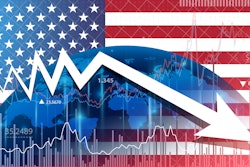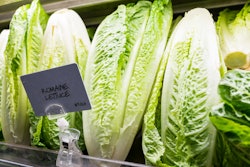
The pace of merger and acquisition (M&A) activity in the U.S. food and beverage space in 2022 continues to be slower than last year. Deal volume in 2021 was spurred by increased consumer demand, supportive credit markets, fatigued business owners and the threat of increased capital gains tax rates. While many of these dynamics remain in play, several new challenges have weighed more heavily on deal activity in 2022. This has led to M&A activity in this segment being down 18% over the first three quarters in 2022 compared to the same period in 2021. This was even more acute in Q3 2022, when M&A deal volume was down almost 27% compared to Q3 2021 according to Capital IQ.
The limited availability of low-cost capital has likely been a key factor in the decrease in M&A activity across all sectors in 2021. To curb rampant inflation, the U.S. Federal Reserve shrank its balance sheet and increased interest rates in Q1 of 2022. While these actions may not curb inflation, they have created challenges in funding of M&A transactions. Buyers of businesses generally have less debt capital available for use in funding transactions, and the amounts of debt they can procure are often much more expensive than they were in 2021. Lenders that fund transactions have become more selective about the deals that they pursue. As a result, buyers are more cautious about making investments in new companies and will often require the prospect of greater returns to move forward with deals. Aside from the slowdown in activity, this dynamic has led to a decline in valuations for deals that are completed.
Operational challenges have continued into 2022. Inflation, the lack of sufficient inputs and high fuel costs have combined to severely impact profitability for businesses in the food and beverage space. While most businesses were able to pass along these price increases earlier in 2022, many retailers and foodservice operators have reached a tipping point where they feel consumers are reducing purchases in reaction to higher prices. Further, the labor market remains tight, which has resulted in many businesses performing below capacity and absorbing higher wage rates. The supply chain has become a more important area for due diligence among buyers where certain risks (supplier concentration, distribution pinch points, inefficient routes to consumer) often result in lower valuations in transactions. These dynamics have resulted in many business owners holding off on speaking with potential buyers until incumbent operational challenges dissipate and financial performance is more consistent.
As the United States enters what many believe to be a recessionary environment, it is unclear how U.S. consumers will shift their spending habits. Buyers and lenders should be cautious in solely relying on prior recessions for guidance on which product categories and sales channels will succeed, as many consumers have changed their priorities post-pandemic. For example, the convenience of e-commerce, plant-based foods and food-as-medicine may continue to be priorities for consumers during a recession, but many consumers may not be able to afford them. Further, while dollar stores and private labels have traditionally benefited from recessions, they may not offer the breadth and quality of products that consumers have become accustomed to in recent years.
While the capital markets generally remain challenged, there is capital available to fund acquisitions of quality businesses. According to Capital IQ, members of the S&P 500 held approximately $1.8 trillion in cash on their balance sheets as of June 30, 2022. In addition, private equity (PE) funds around the world hold more than $400 billion in capital raised that needs to be deployed for acquisitions. Valuations will likely continue to be challenged until the capital markets improve. Public market performance provides an indication of top-line valuation; the S&P 500 is down over 17% this year through Nov. 21. Higher interest rates weigh down PE returns and typically result in lower purchase prices. Buyers are looking at the most conservative scenario when valuing businesses, which can often cause gaps in valuation between buyers and sellers. Creative transaction structures such as earnouts or seller notes are likely to bridge these valuation gaps. This provides buyers with an opportunity to acquire quality businesses at a discount from where they typically trade. Working with an advisor that can provide a nuanced and supportable forecast for a business can help lead to the highest value upfront for sellers in M&A transactions.
Despite these challenges, the food and beverage category remains an attractive end market for strategic and PE buyers, particularly in uncertain times. Food and beverage is generally considered a recession-resistant category and often not susceptible to consumer discretion. As a result, M&A activity in the category will likely increase in 2023 if operational challenges can subside soon.


















